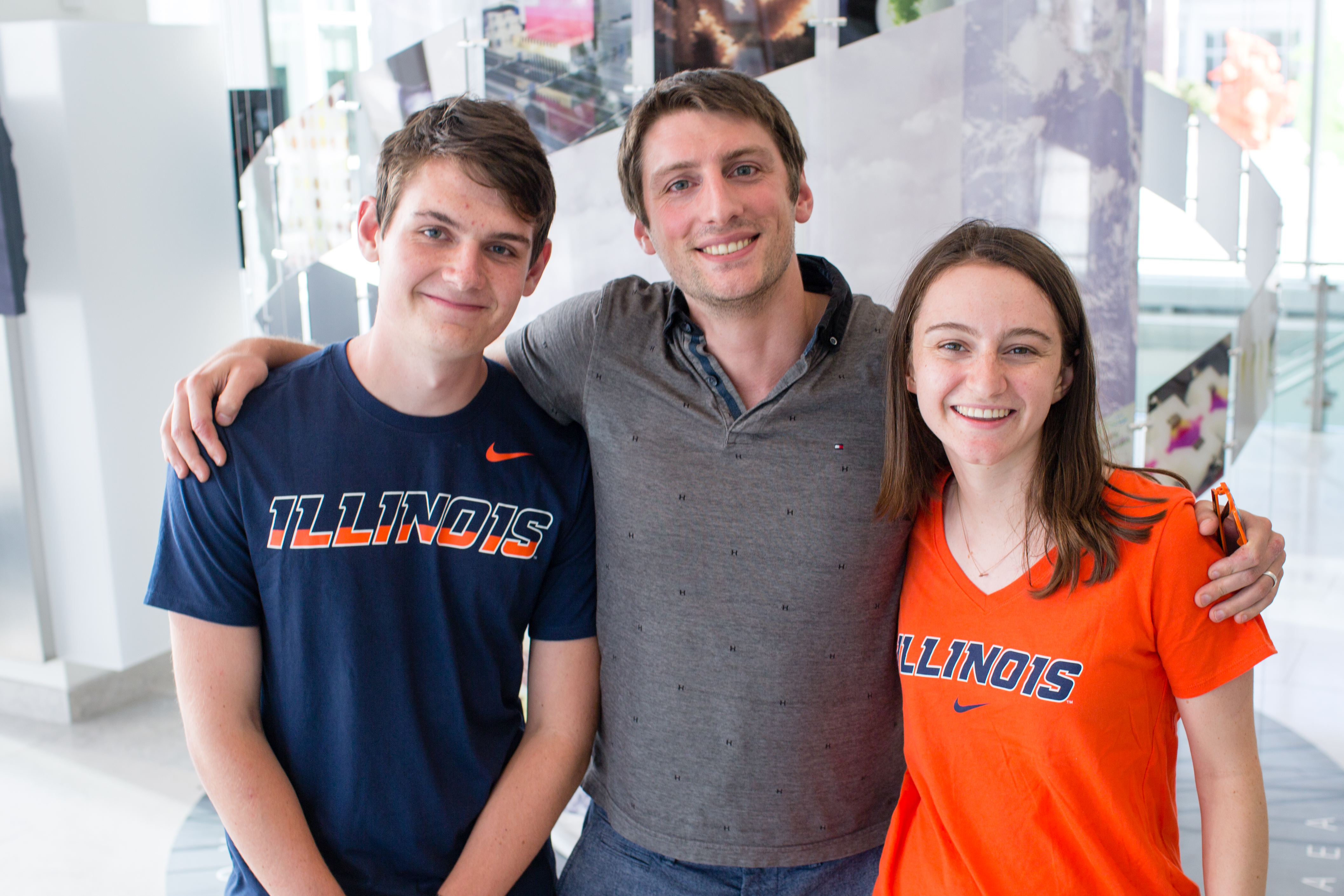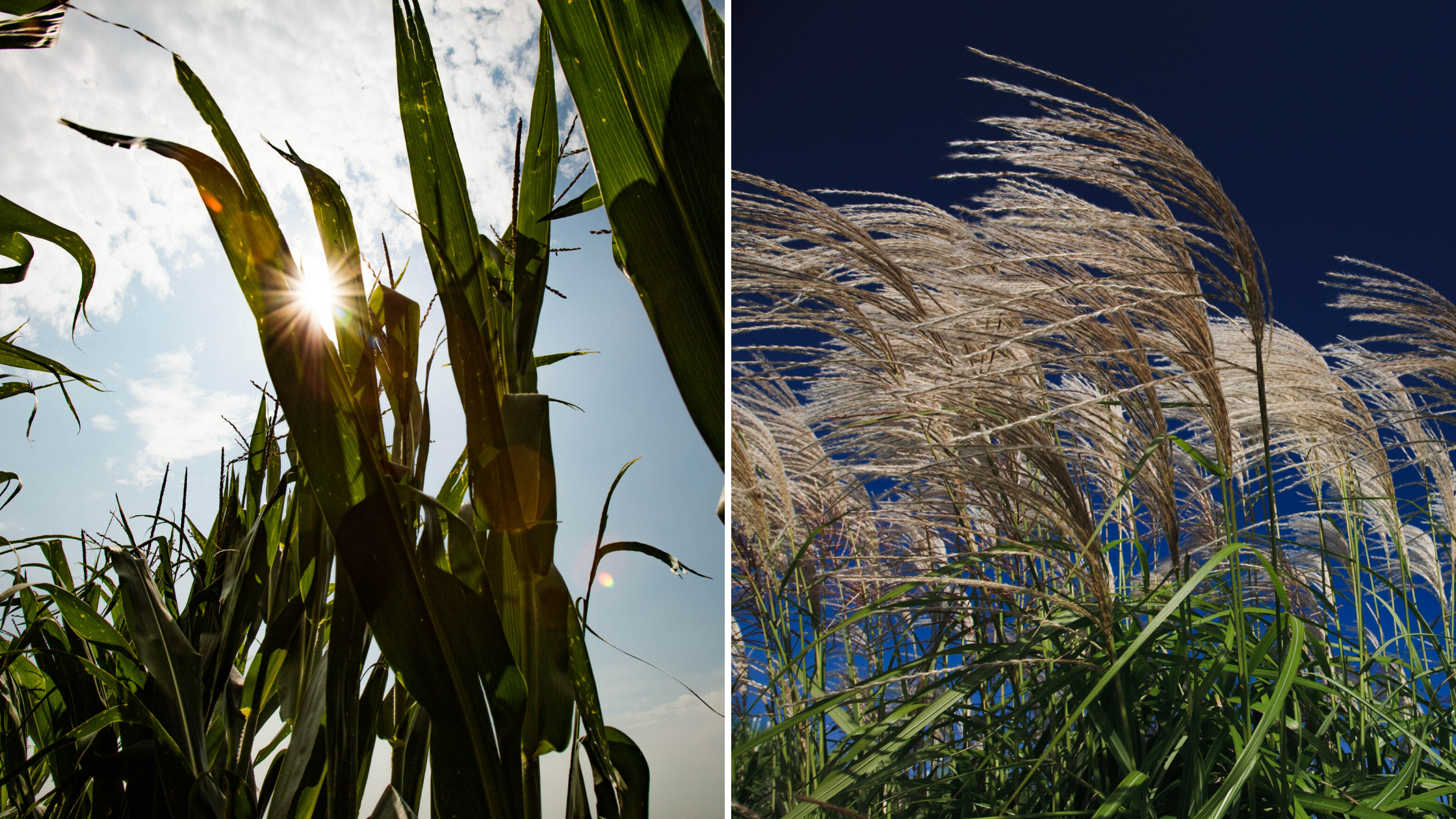Undergrad-led study suggests light environment modifications could maximize productivity
CHAMPAIGN, Ill. — The crops we grow in the field often form dense canopies with many overlapping leaves, such that young “sun leaves” at the top of the canopy are exposed to full sunlight with older “shade leaves” at the bottom. In order to maximize photosynthesis, resource-use efficiency, and yield, sun leaves typically maximize photosynthetic efficiency at high light, while shade leaves maximize efficiency at low light.
“However, in some of our most important crops, a maladaptation causes a loss of photosynthetic efficiency in leaves at the bottom of the canopy, which limits the plants’ ability to photosynthesize and produce yields,” said Charles Pignon, a former postdoctoral researcher at the University of Illinois. “In order to address this problem, it’s important to know whether this is caused by leaves being older or exposed to a different light environment at the bottom of the canopy.”
This question was answered in a recent study published in Frontiers in Plant Science, where researchers from the University of Illinois and the University of Oxford worked with maize and the bioenergy crop Miscanthus to find that the decline in the efficiency of leaves at the bottom of the canopy was not due to their age but to their altered light environment.
This work was conducted through the Illinois Summer Fellows (ISF) program. Launched in 2018, ISF allows undergraduate students to conduct plant science research alongside highly skilled scientists at Illinois. 2018 Fellows Robert Collison and Emma Raven worked with Pignon and Stephen Long, the Stanley O. Ikenberry Chair Professor of Plant Biology and Crop Sciences at Illinois, to confirm and better understand results from previous studies for Water Efficient Sorghum Technologies (WEST), a research project that aimed to develop bioenergy crops that produce more biomass with less water.

Photosynthesis is the natural process that plants use to convert sunlight into energy. Plants usually fall under the two main types of photosynthesis — C3 and C4. The difference between these types is that C4 plants have a mechanism that concentrates carbon dioxide inside their leaves, allowing them to photosynthesize more efficiently. However, most plants, trees, and crops operate using the less efficient C3 photosynthesis.
Both sun and shade leaves contribute to photosynthetic carbon assimilation, producing the sugars that feed the plant and fuel yield. Therefore, lower canopy photosynthesis is an important process that affects the yield of the whole plant, with an estimated 50 percent of total canopy carbon gain contributed by shade leaves.
Previous studies of C3 plants have shown that shaded leaves are typically more efficient than sun leaves at low light intensities, meaning shaded leaves adapt to their low light environment. However, a previous study by Pignon and Long showed that this is not the case for all plants. The canopies of maize and Miscanthus, C4 crops that usually photosynthesize more efficiently than C3 crops, had shade leaves that were less photosynthetically efficient, suggesting a maladaptation in these important crops.
“Shade leaves receive very little light, so they usually become very efficient with low light use,” said Pignon, now a plant physiologist at Benson Hill in St. Louis. “Essentially, they make the most of what little light they do receive. However, in the C4 crops we studied, shade leaves in these crops not only receive very little light, but they also use it less efficiently. It’s a very costly maladaptation in crops that are otherwise highly productive — hence our calling it an Achilles’ heel.”
With six to eight layers of leaves in our modern maize crop stands, most leaves are shaded and can account for half of the plant’s growth during the critical phase of grain filling.
“In the previous study, researchers estimated that this maladaptation was causing a loss of 10 percent in potential canopy photosynthesis gain,” said Raven, who recently graduated from Oxford with plans to pursue her doctorate. “There are essentially two potential reasons: the age of the leaves or the light conditions, so we investigated which factor was causing this inefficiency.”
Collison and Raven, co-first authors of this newly published paper, collected data and analyzed the maximum quantum yield of photosynthesis — the maximum efficiency with which light is used to assimilate carbon — in leaves of the same chronological age but different light environments to discover the crops’ Achilles’ heel. This was achieved by comparing leaves of the same age in the center of plots of these species versus those on the sunlight southern edge of these plots. From this, they showed that the poor photosynthetic efficiency of these crops’ lower leaves is caused by altered light conditions and not age.

“Maize and Miscanthus are both closely related to sugarcane and sorghum, so other C4 crops could potentially have this loss in photosynthetic efficiency caused by the light environment,” explained Collison, who has also graduated from Oxford and may pursue graduate studies. “By finding the cause of this loss in efficiency, we can begin to look at potential solutions to this problem, modifying plants to improve their productivity.”
Illinois Summer Fellows Program
The ISF program has cultivated an environment where the Fellows have the independence needed to develop as scientists while knowing that they have the support and encouragement of their supervisors. Fellows are paired with a scientist supervisor to assist them with a specific element of a project aimed to increase crops’ photosynthetic and/or water-use efficiency. The program aims to provide a rewarding experience that helps students develop as scientists, and ultimately, to consider pursuing careers in plant biology.
“The opportunity to travel to another country and conduct meaningful research in a real-world field environment alongside mentors in their field is invaluable,” said Long, who launched and directs the ISF program at the Carl R. Woese Institute for Genomic Biology. “At the end of their time at Illinois, our Fellows have expressed that this experience allowed them to contribute to the world and take back valuable skills they can apply in their future endeavors as innovators in the field of agriculture and beyond.”
Collison reflects on his time at Illinois as an experience that not many students, especially so early in their career, get to take part in. “The chance to do any research so early in your career as a scientist is really exciting,” he said. “Everyone we met— including our supervisors and other scientists — was always willing to help us.”
Raven also shared her insights on the value of doing research at Illinois and what differences there may be in other academic or work settings. “When you are attending lectures or practical classes, you never quite get that feeling of true ownership of your own projects because you just follow whatever your professor tells you to do,” Raven said. “But having ownership of this paper at Illinois is gratifying. It is also exciting to be a part of something that is bigger than us and will ultimately help farmers in other countries to grow food more sustainably.”
The ISF program is supported by Oxford University in England and the Realizing Increased Photosynthetic Efficiency (RIPE), an international research project led by Illinois that is engineering crops to be more productive by improving photosynthesis. It is supported by the Bill & Melinda Gates Foundation, the U.S. Foundation for Food and Agriculture Research (FFAR), and the U.K. Government's Department for International Development (DFID).
For more information about the ISF program and the application process, visit https://ripe.illinois.edu/team/illinois-summer-fellows.
Water Efficient Sorghum Technologies (WEST) is a research project that is developing bioenergy crops that require less water per acre, ensuring a sustainable source of biofuel. The project is supported by the Advanced Research Projects Agency-Energy and led by the University of Illinois in partnership with Cornell University, University of Nebraska-Lincoln, University of Wisconsin-Madison, and the USDA Agricultural Research Service.
Realizing Increased Photosynthetic Efficiency (RIPE) aims to improve photosynthesis to equip farmers worldwide with higher-yielding crops to ensure everyone has enough food to lead a healthy, productive life. This international research project is sponsored by the Bill & Melinda Gates Foundation, the U.S. Foundation for Food and Agriculture Research (FFAR), and the U.K. Government's Department for International Development (DFID).
By: Amanda Nguyen || RIPE Communications Specialist